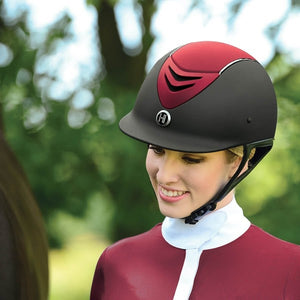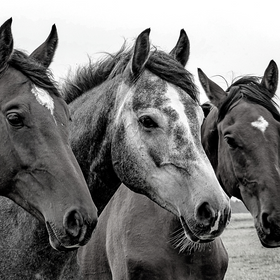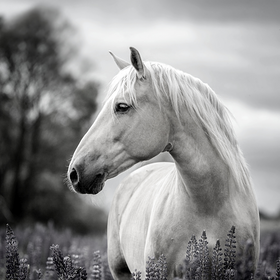
Navigating Barnyard Ice: Essential Safety Tips
The winter season quickly transforms the landscape into a picturesque winter wonderland. With that comes the yearly challenge of ensuring the safety of our horses amidst icy conditions. The charm of the wintery holiday season can bring the inherent dangers of slippery surfaces and freezing temperatures. Take a look at these tips to help navigate barnyard ice safely for both you and your horse.
Understanding the Risks
Before we get into preventive measures, it's crucial to grasp the risks posed by icy conditions in a barn setting. Slippery surfaces can lead to accidents such as slips, falls, and injuries for horses and humans. Horses are particularly vulnerable to devastating injuries when navigating icy terrain. The cold temperatures may also exacerbate the risk of conditions like hypothermia and frostbite.
Regular Maintenance of Barnyard Surfaces
To help mitigate risk, prioritize the regular maintenance of barnyard surfaces by implementing a comprehensive snow and ice removal plan. Utilize appropriate equipment, such as snow shovels or plows, to clear pathways, paddocks, and common areas. Consider applying a mixture of salt and sand to high-traffic areas to enhance traction and minimize the risk of slipping.
Invest in Non-Slip Flooring
Take a proactive approach to prevent slips by investing in non-slip flooring inside the barn. Rubber mats or textured flooring can significantly reduce the likelihood of slips and falls, especially in areas where horses are fed, groomed, and housed. Ensure that these non-slip surfaces extend to common areas used by humans and horses.
Appropriate Shoeing Techniques
Collaborate with a knowledgeable farrier to ensure your horses are equipped with appropriate winter horseshoes. These specialized shoes provide better traction on icy surfaces and help prevent slipping. Consider adding borium studs or caulks to the shoes for additional grip in slippery conditions.
Monitor Weather Conditions
Stay informed about weather forecasts, particularly with freezing conditions. Plan activities and chores during the warmest parts of the day when ice is less likely to form. To reduce the risk of slips or falls, minimize unnecessary outings during icy weather, especially if they involve riding or exercising the horses.
Proper Grooming and Blanketing
Keep your horses happy and healthy by providing meticulous grooming and appropriate blanketing. A well-groomed coat helps insulate against the cold, while properly fitted blankets protect horses from icy winds. Regularly check that blankets are dry and ice-free to prevent discomfort and ensure protection against the elements.
Well-Lit Pathways
You can add to safety measures and mitigate risk by installing adequate lighting in and around the barn to illuminate pathways and common areas. Good visibility is crucial for both humans and horses to navigate safely. Consider utilizing solar-powered lights or battery-operated lanterns in areas without access to electricity to ensure consistent illumination during the darker winter days.
Emergency Preparedness
Increase your barn's safety by equipping it with emergency supplies, including thorough first aid kits for humans and horses. Familiarize yourself with basic first aid procedures and recognize signs of cold-related issues in horses. Swift attention to injuries or illnesses can significantly improve recovery outcomes and mitigate potential complications.
Navigating barnyard ice can feel daunting. It requires a proactive and vigilant approach from everyone involved in the barn. By implementing these comprehensive tips, you can create an environment that prevents accidents and ensures a comfortable and stress-free winter for your equine companions. A well-maintained barn increases safety and lets you appreciate the season's beauty with peace of mind.





